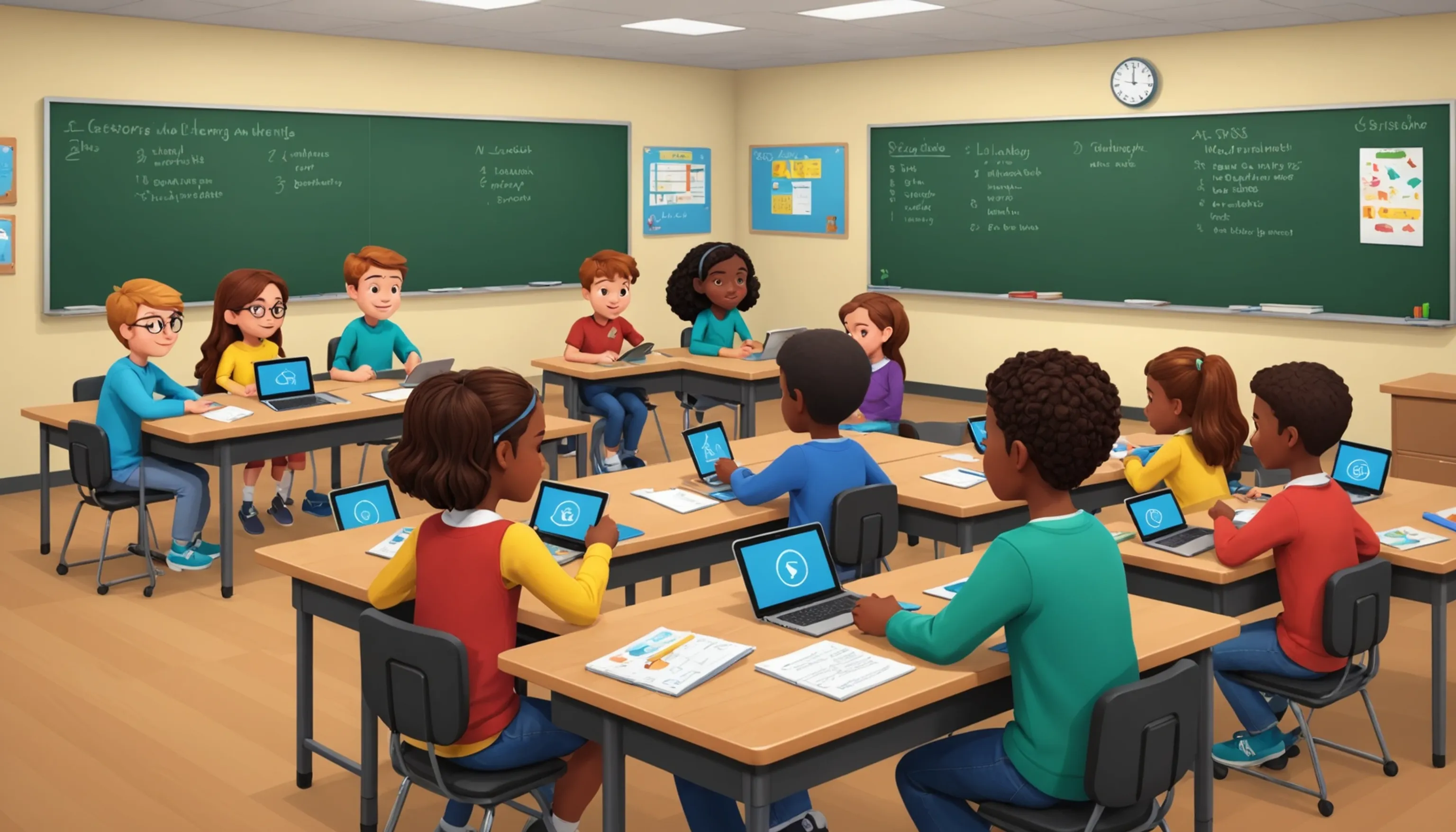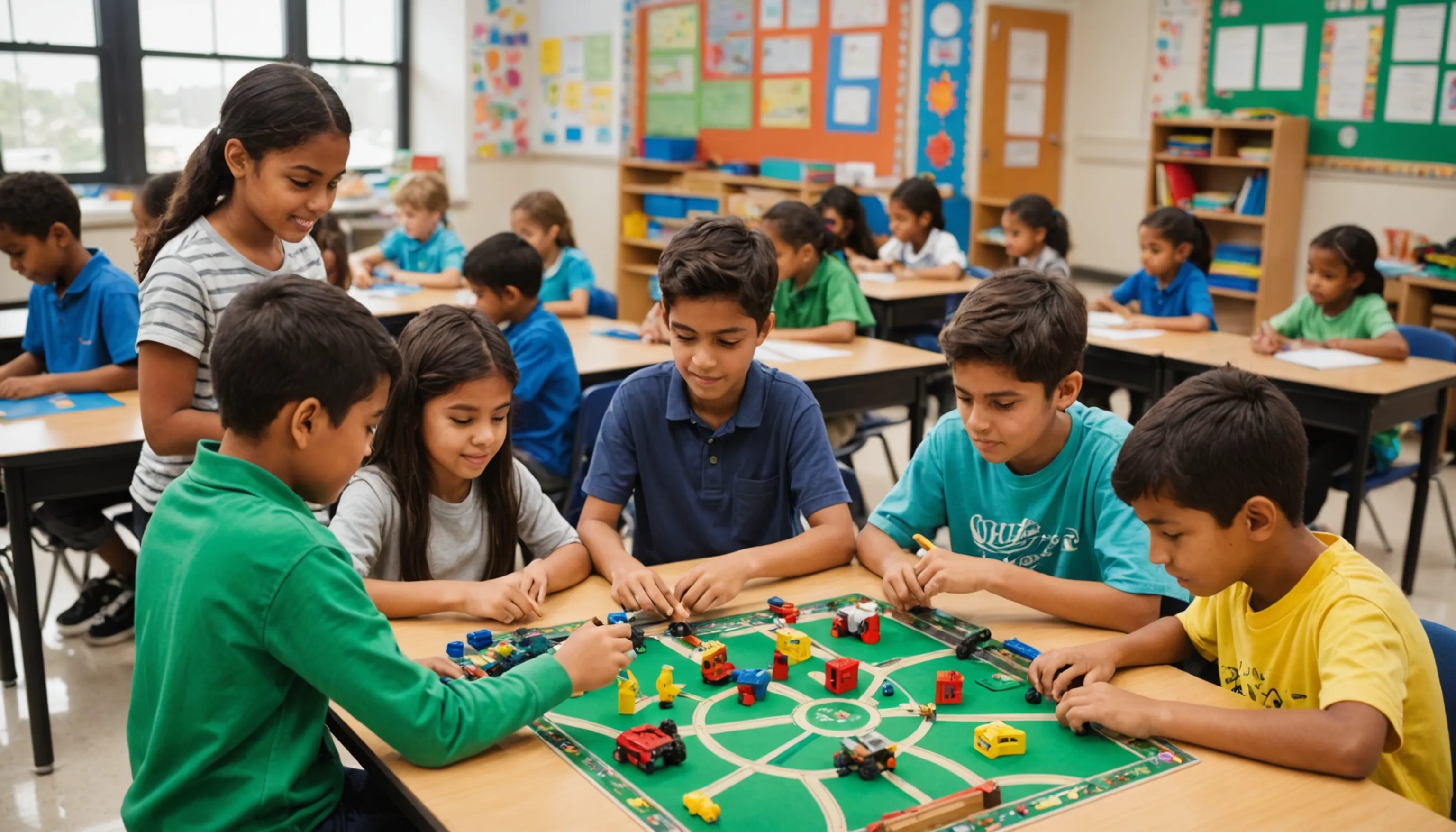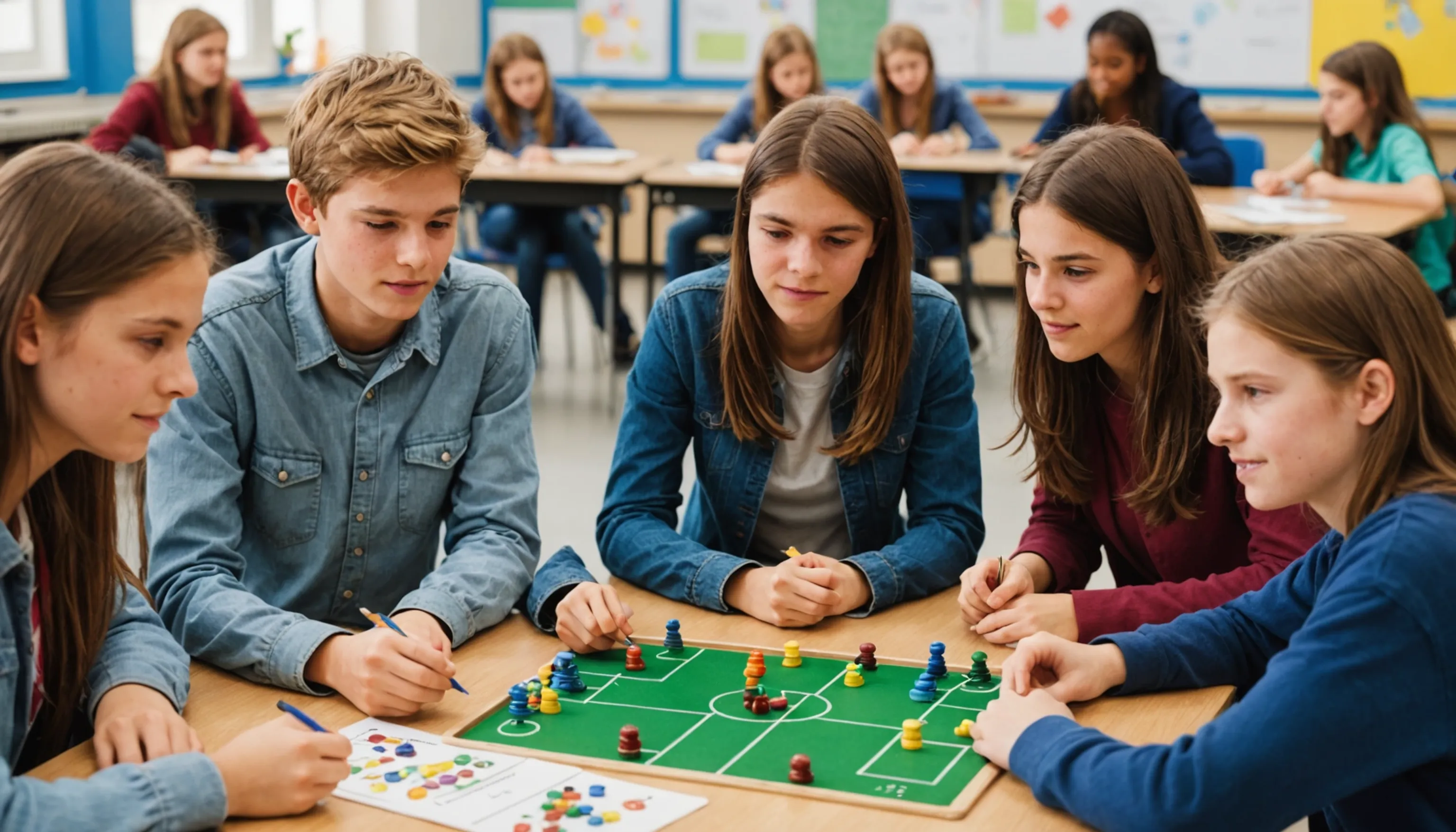5 Ways to Use Learning Games in the Classroom
 HvWHenry van Wagenberg
HvWHenry van Wagenberg
5 Ways to Use Learning Games in the Classroom
Learning games can transform the classroom experience by making education more enjoyable and interactive. Here are five ways to effectively incorporate learning games:
- Engagement: Use games to grab students' attention and motivate them to participate actively.
- Teamwork: Foster collaboration through multiplayer games that encourage communication and problem-solving.
- Reinforcement: Implement games that reinforce key concepts and skills, enhancing understanding.
- Technology: Leverage educational technology platforms for interactive game-based learning.
- Feedback: Use games to provide immediate feedback, helping students track their progress.
Enhancing Engagement Through Learning Games
Learning games are powerful tools that can significantly enhance student engagement in the classroom. By transforming traditional lessons into interactive experiences, educators can capture students' attention and foster a love for learning.
One of the primary benefits of using learning games is their ability to create a dynamic classroom environment. When students participate in games, they become active learners rather than passive listeners. This active involvement encourages them to think critically and creatively, leading to a deeper understanding of the material.
Additionally, learning games often incorporate elements of competition and collaboration, which can motivate students to perform at their best. For example, team-based games encourage students to work together, enhancing their social skills while reinforcing content knowledge. This collaborative aspect not only builds camaraderie among peers but also mirrors real-world situations where teamwork is essential.
Moreover, games can be tailored to address various learning styles, ensuring that all students have the opportunity to participate meaningfully. Whether through visual aids, auditory cues, or hands-on activities, learning games can cater to diverse preferences, making lessons more inclusive.
Finally, the instant feedback provided through game mechanics allows students to track their progress and identify areas for improvement. This immediate reinforcement can boost their confidence and encourage a growth mindset. Overall, integrating learning games into the classroom can lead to a more engaging, effective, and enjoyable learning experience for all students.
Fostering Teamwork and Collaboration
Fostering teamwork and collaboration in the classroom is crucial for developing essential social skills and enhancing the overall learning experience. Learning games are an effective way to achieve this goal, as they require students to work together towards a common objective.
When students engage in team-based games, they learn how to communicate effectively and share ideas. These interactions are vital for building interpersonal skills, as they encourage students to articulate their thoughts and listen to their peers. As they strategize and solve problems together, students gain a deeper understanding of the subject matter while also developing critical thinking skills.
Moreover, collaboration through learning games fosters a sense of community among students. When they feel connected to their peers, they are more likely to participate actively in class discussions and support one another's learning. This positive classroom culture can lead to improved academic performance, as students feel safe and encouraged to take risks in their learning.
Additionally, learning games often require students to take on different roles within their teams. This role-playing aspect allows students to explore various perspectives and learn the importance of each member's contributions. By appreciating the strengths and skills of their peers, students develop empathy and respect for one another.
In conclusion, incorporating learning games into the classroom is an effective strategy for fostering teamwork and collaboration. These games not only enhance academic learning but also equip students with essential life skills that will benefit them in their future endeavors.

Reinforcing Concepts with Game-based Learning
Game-based learning is an innovative approach that significantly reinforces concepts by making education interactive and enjoyable. By incorporating games into the curriculum, educators can help students grasp complex ideas more effectively, leading to a deeper understanding of the material.
One of the key advantages of game-based learning is its ability to break down challenging concepts into manageable segments. For instance, using educational games that focus on specific topics allows students to engage with the material in a fun and stress-free environment. This approach encourages exploration and experimentation, enabling students to learn at their own pace.
Moreover, games often utilize a hands-on approach, which can be particularly beneficial for kinesthetic learners. These learners thrive when they can physically interact with the content, making game-based learning an ideal solution. By manipulating game elements, students can visualize and apply concepts, solidifying their understanding through practical experience.
Additionally, game-based learning provides immediate feedback, allowing students to assess their understanding and identify areas for improvement. This instant reinforcement can boost confidence and motivate students to persist in their learning efforts. For example, when students see their progress in a game, they are more likely to remain engaged and invested in mastering the subject matter.
In summary, game-based learning serves as an effective method for reinforcing concepts in the classroom. By creating an interactive and supportive learning environment, educators can enhance students' comprehension and retention of key ideas, ultimately leading to better academic outcomes.
Incorporating Technology in Learning Games
Incorporating technology in learning games has revolutionized the way educators engage students in the classroom. Digital platforms and applications offer interactive experiences that enhance traditional learning methods. For example, online quizzes and educational apps can gamify lessons, making them more appealing and accessible.
Technology also allows for personalized learning, as students can progress at their own pace and revisit challenging concepts. Furthermore, incorporating multimedia elements—such as videos, animations, and simulations—can cater to diverse learning styles, ensuring that all students remain engaged and motivated to learn.
Using Online Platforms for Learning Games
Using online platforms for learning games has become increasingly popular in today’s digital classroom. These platforms provide educators with a wealth of resources to create engaging and interactive learning experiences for students. One of the primary benefits of online learning games is their accessibility; students can participate from anywhere, making it easier to integrate learning into their daily routines.
Many online platforms offer a variety of educational games that cover multiple subjects and skills. For instance, websites like Kahoot! and Quizizz allow teachers to create customized quizzes that students can play in real-time, promoting a fun and competitive atmosphere. This interactivity not only enhances student engagement but also encourages healthy competition among peers.
Another advantage of using online platforms is the ability to track student progress. Most platforms provide analytics that allow educators to monitor performance and identify areas where students may need additional support. This data-driven approach enables teachers to tailor their instruction to meet the unique needs of each student, ensuring that no one falls behind.
Additionally, online learning games can easily be integrated into lesson plans, making it simple for educators to reinforce concepts taught in class. By gamifying lessons, teachers can create a dynamic learning environment that fosters curiosity and excitement about the subject matter.
In conclusion, incorporating online platforms for learning games is a powerful way to enhance education. By leveraging technology, educators can create engaging, personalized, and effective learning experiences for their students.

Creating Interactive Learning Experiences
Creating interactive learning experiences is essential for fostering student engagement and enhancing the educational process. By integrating hands-on activities and collaborative projects, educators can transform traditional lessons into dynamic learning opportunities that resonate with students.
One effective method for creating these experiences is through the use of learning games that encourage active participation. For instance, educators can implement role-playing games or simulations that allow students to immerse themselves in real-world scenarios. This approach not only makes learning fun but also helps students develop critical thinking and problem-solving skills as they navigate challenges.
Moreover, technology plays a significant role in enhancing interactive learning. Online platforms and educational software provide a wealth of resources, enabling teachers to design customized learning experiences that cater to various learning styles. For example, interactive quizzes, virtual labs, and gamified assessments allow students to engage with the material in a more meaningful way, promoting deeper understanding and retention of knowledge.
Additionally, collaboration is key to creating interactive learning experiences. Group projects that require teamwork encourage students to communicate effectively and share ideas. This collaborative environment not only strengthens social skills but also fosters a sense of community within the classroom.
In summary, creating interactive learning experiences is vital for student engagement and success. By incorporating hands-on activities, leveraging technology, and promoting collaboration, educators can cultivate a stimulating learning environment that inspires students to take an active role in their education.
Benefits of Gamification in Education
Gamification in education offers numerous benefits that enhance the learning experience for students. By integrating game-like elements into lessons, educators can increase student motivation and engagement. This approach transforms traditional learning into a fun and interactive process, encouraging students to participate actively.
One of the key advantages of gamification is the instant feedback it provides. Students can track their progress and receive immediate rewards for their achievements, which boosts their confidence and encourages them to strive for improvement. Additionally, gamification promotes healthy competition, motivating students to excel while fostering a sense of camaraderie among peers.
Furthermore, gamified learning experiences can cater to various learning styles, making education more inclusive. By appealing to visual, auditory, and kinesthetic learners, educators can ensure that all students remain engaged and benefit from the material. Overall, gamification in education not only enhances learning but also prepares students for future challenges.
Motivating Students Through Game Elements
Motivating students through game elements is an effective strategy that can significantly enhance their learning experience. By incorporating features commonly found in games, such as rewards, challenges, and competition, educators can create a more engaging classroom environment that encourages active participation.
One of the primary game elements that can be utilized is the reward system. This includes points, badges, or levels that students earn as they progress through their learning tasks. These incentives not only provide immediate gratification but also encourage students to set and achieve personal goals. For example, a student who earns a badge for completing a challenging assignment feels a sense of accomplishment, motivating them to tackle further challenges.
Additionally, implementing challenges and quests can stimulate students' interest. By framing lessons as missions to complete, educators can tap into students' natural desire for achievement and adventure. This approach encourages students to engage with the material in a fun and meaningful way.
Competition is another powerful motivator. Friendly contests, whether through team-based games or individual challenges, can foster a spirit of camaraderie and drive students to excel. When students see their peers participating and excelling, it can inspire them to push their own limits.
In summary, motivating students through game elements not only enhances engagement but also fosters a love for learning. By incorporating these elements into lessons, educators can create a dynamic educational experience that inspires students to strive for success.
Improving Retention and Understanding
Improving retention and understanding is a critical goal in education, and incorporating game elements into learning can significantly enhance these outcomes. By creating an interactive and engaging environment, educators can help students retain information more effectively and develop a deeper understanding of the subject matter.
One of the key benefits of using games in education is their ability to provide immersive experiences that reinforce learning. When students actively participate in games, they engage multiple senses, which aids memory retention. For instance, a game that requires students to apply concepts in a simulated environment allows them to practice skills in a context that mimics real-life situations. This hands-on approach solidifies their understanding and makes the learning experience more memorable.
Furthermore, game-based learning often incorporates repetition through varied scenarios and challenges, which is essential for reinforcing knowledge. As students encounter similar concepts in different contexts, they are more likely to internalize the information and connect it to prior knowledge. This approach encourages a deeper cognitive processing, leading to improved understanding.
Additionally, the immediate feedback provided in game settings helps students identify misconceptions and correct errors on the spot. This instant reinforcement allows them to adjust their understanding in real-time, ensuring they grasp the material before moving on.
In conclusion, incorporating game elements into education is a powerful strategy for improving retention and understanding. By fostering engagement and providing interactive experiences, educators can enhance students' learning journeys and equip them with the skills necessary for future success.
